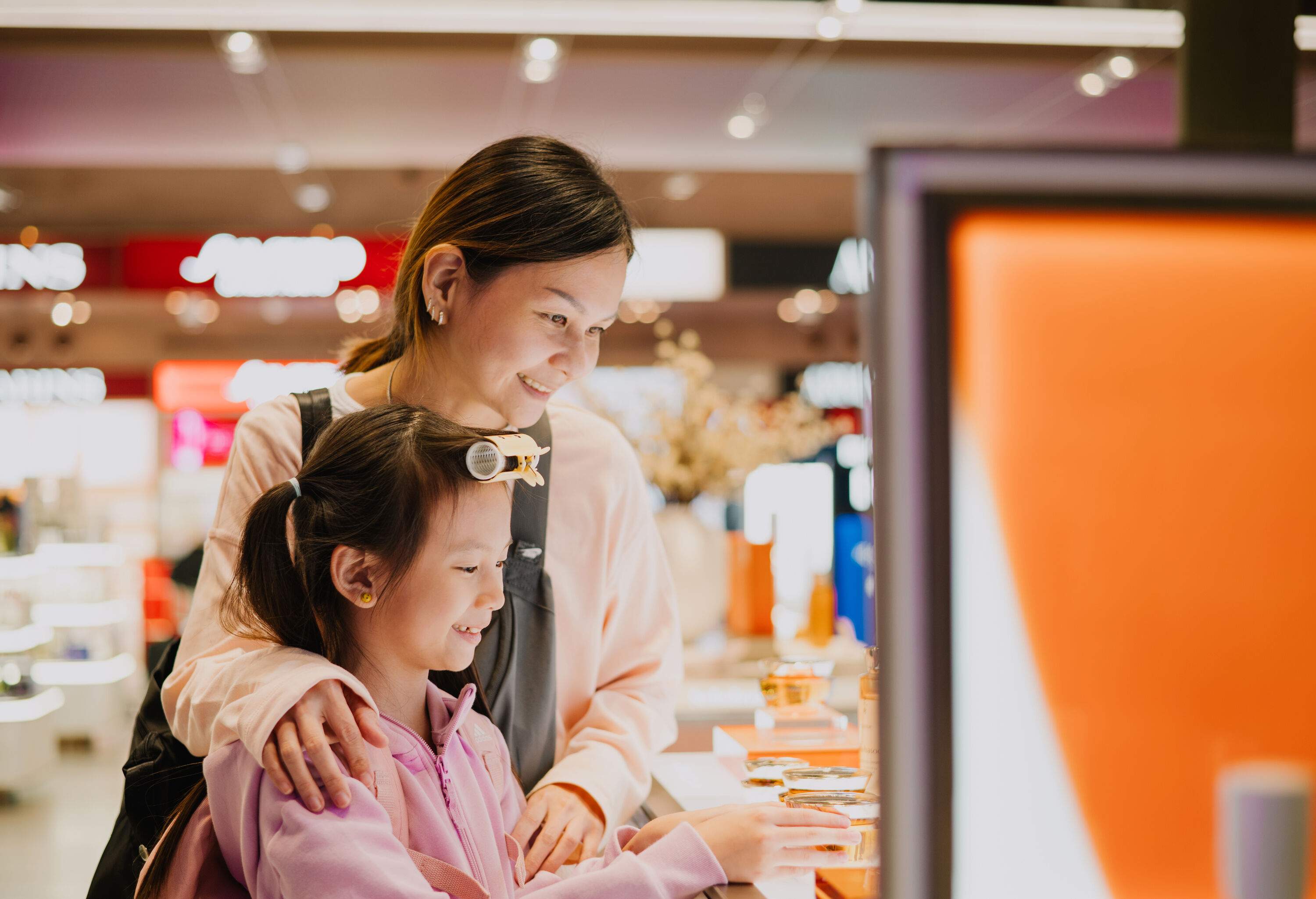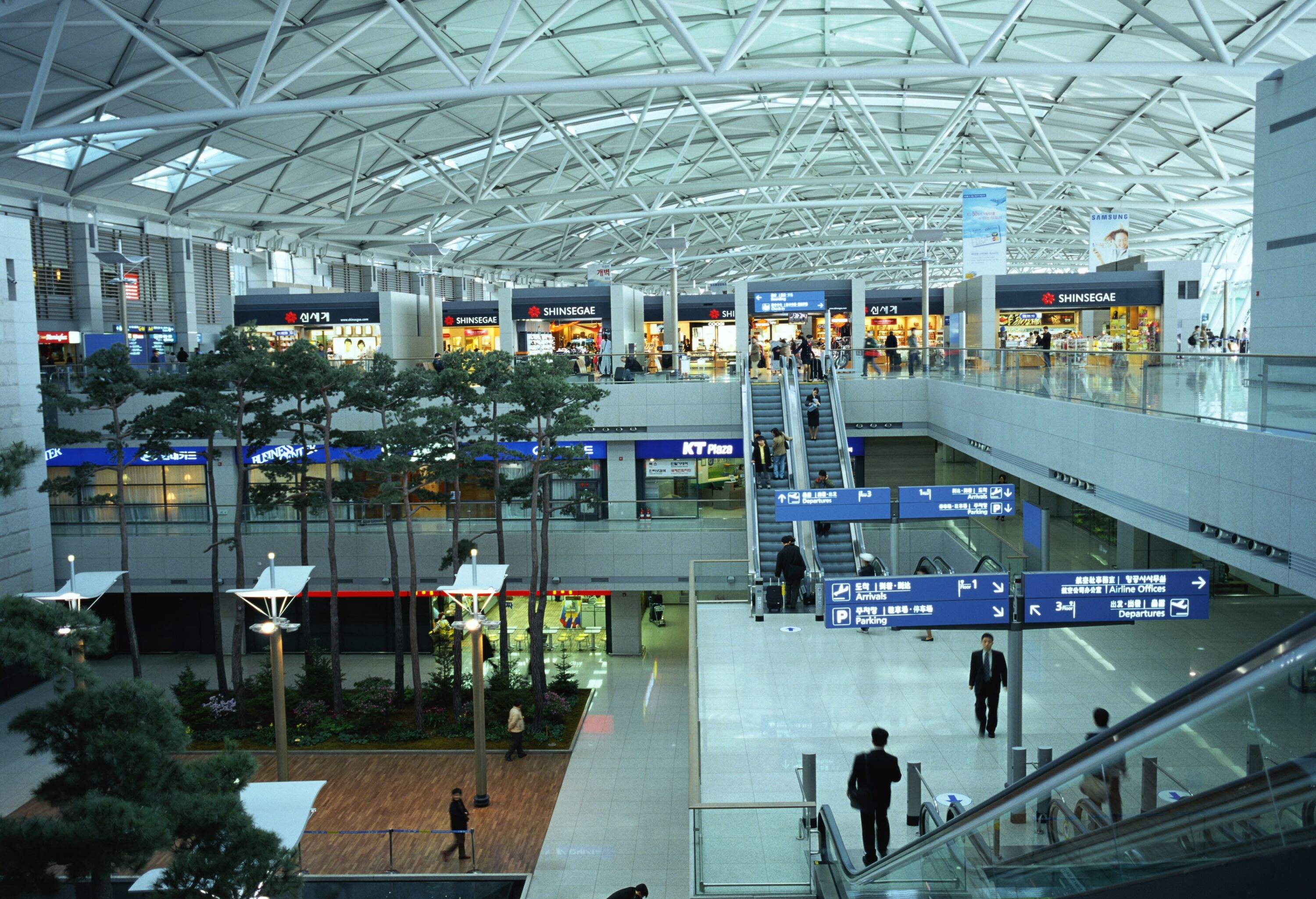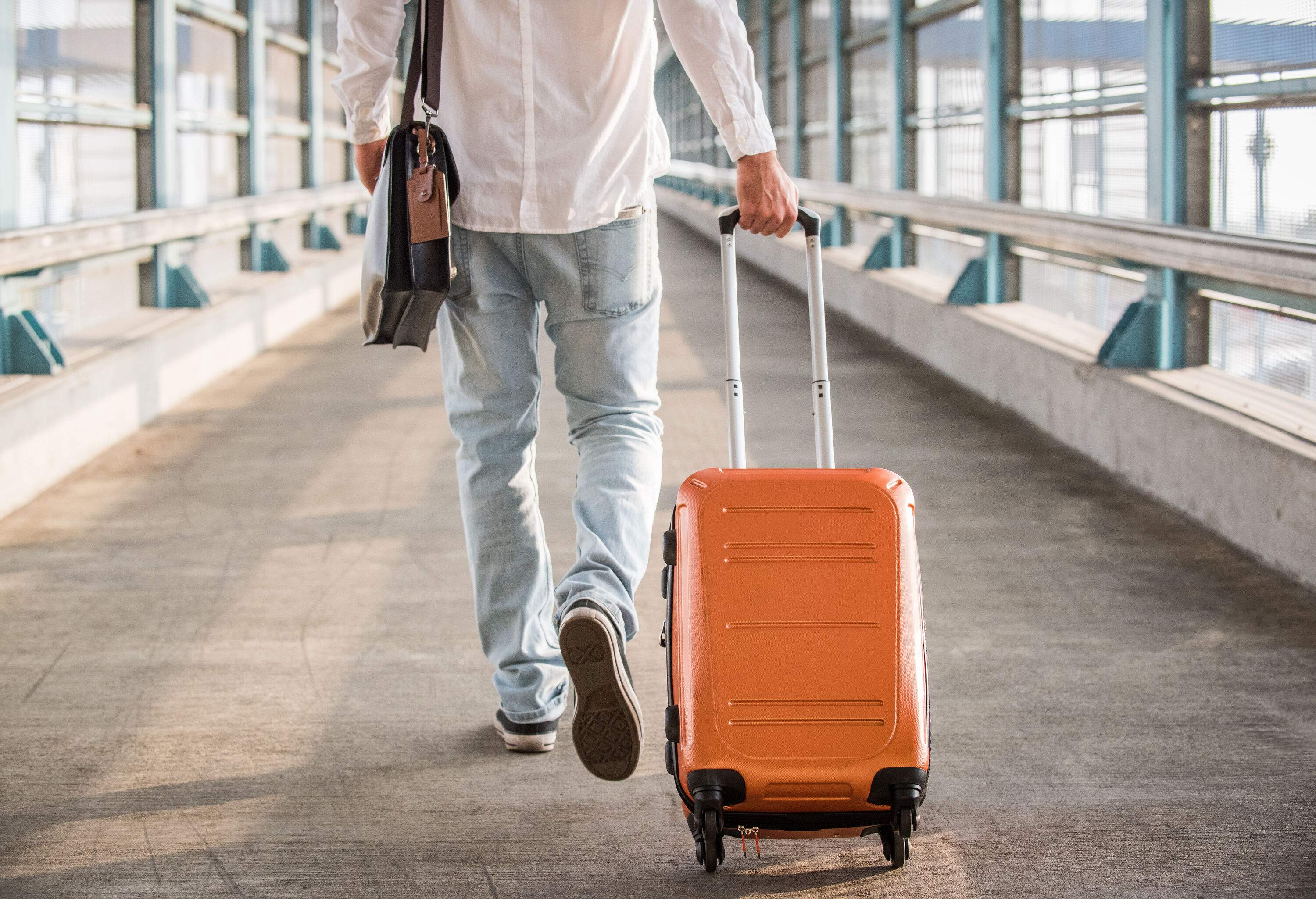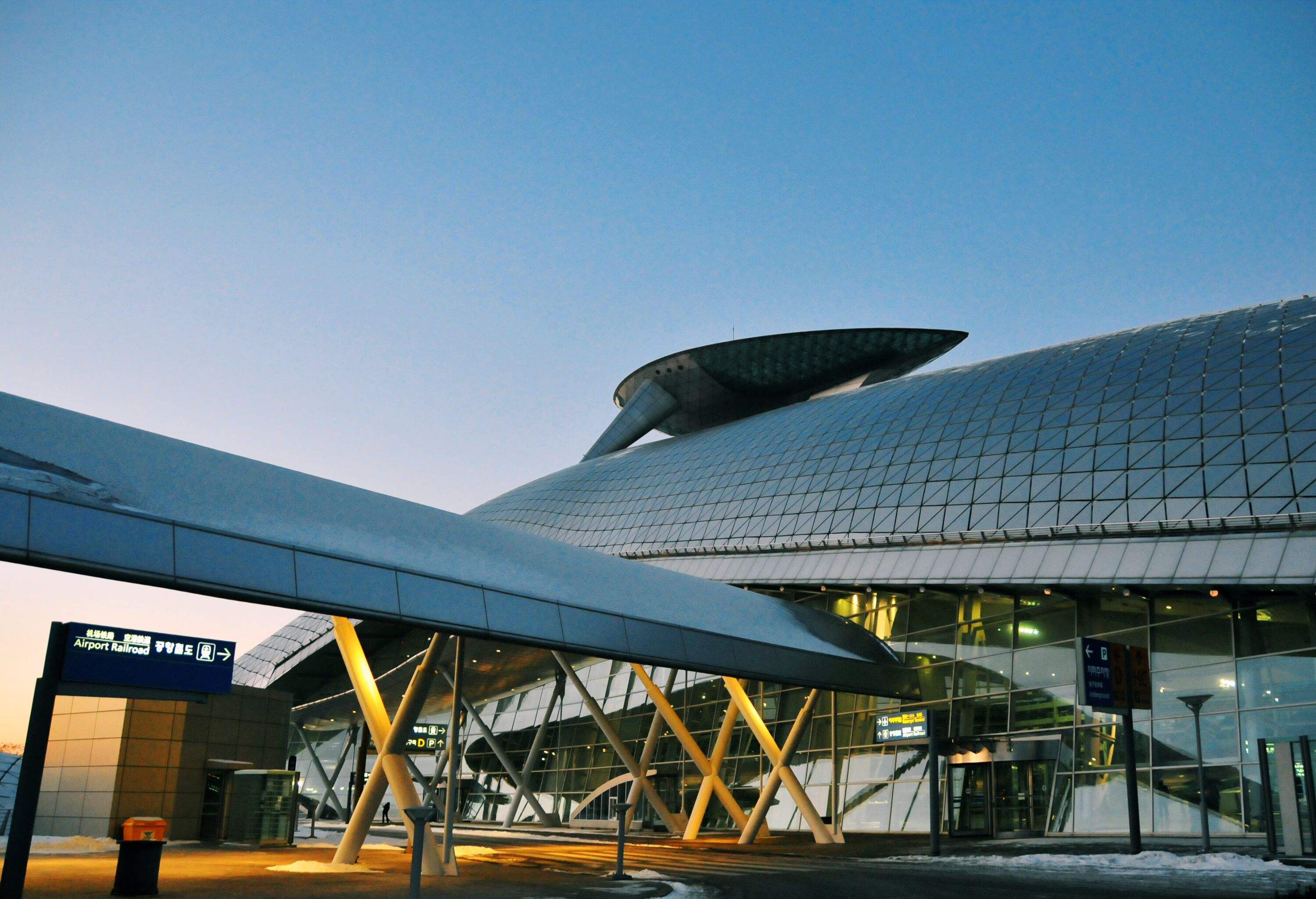Over recent years, South Korea has become a bucket list destination for many thanks to the burgeoning popularity of Korean modern culture and cuisine. Fortunately, Seoul has two major airports to handle this new influx of visitors: Incheon International Airport (ICN) and Gimpo International Airport (GMP). Both make it easy for international visitors to get to the Land of the Morning Calm and travel within the country itself.
Gimpo International Airport (GMP)

Gimpo International Airport (GMP) is the smaller of the two international Seoul airports and serves primarily domestic and inter-Asia international flights. GMP was Seoul’s only major international airport until Incheon International Airport opened in 2001.
Location
Of the two Seoul airports, Gimpo is the nearest one to the city center, about 10 miles away. Its proximity makes it a go-to airport for locals traveling to other parts of South Korea like Busan, Jeju Island, and Daegu. It’s also a popular choice for people who want to hop over to cities in Japan like Tokyo and Osaka, or to Shanghai in China. Visitors can fly to and from the US through Gimpo, but it will most likely involve a layover and cost significantly more than flying in and out of Incheon.
Terminals
Gimpo only has two terminals: one for domestic flights and one for international flights.
The domestic terminal is where you’ll go for inter-Korea flights. Airlines that are housed here include Korean Air, Asiana Airlines, Air Busan, Jeju Air, T’way Air, and Jin Air.
The international terminal is home to international airlines like Japan Airlines, China Eastern Airlines, All Nippon Airways, and various South Korean airlines that fly to regional international destinations. Passengers who arrive here will have to go through immigration.
There’s a shuttle bus that takes passengers from one terminal to the other.
How to get to Gimpo?
Gimpo International Airport is easily accessible by rideshare or public transportation. Catch the Airport Railroad Express (AREX) train from Seoul Station (make sure to get on the all-stop train), which stops at both airports and will drop you off at Gimpo in approximately 20-30 minutes.
Alternatively, you can hop on Line 5 or Line 9 of the Seoul Metro, which both stop at Gimpo. Pro tip: Line 9 is an express line with fewer stops and can get you to the airport faster depending on where you get on. Whichever line you take, just be prepared to walk a good distance to the terminals.
There are also various bus routes that will take you to Gimpo. No matter which terminal you’re going to, you’ll head to the second floor for check-in.
What to do in Gimpo International Airport?

Since it’s a smaller airport, I find you don’t have to arrive as early as you would at Incheon. An hour before domestic flights is usually fine, even with checked baggage. However, if you find yourself having to spend a large chunk of time at Gimpo, there are some things you can do to pass the time.
If you come via subway, you’ll pass by the Lotte Mall on the way (or can easily head there if you took a rideshare). Inside there are various stores, supermarkets, and even a movie theater. You can conveniently leave your bags at a luggage check-in station before heading in, so you can shop with ease.
If you’re arriving or departing from the international terminal, you’ll have access to duty-free shopping at Lotte and Shilla, as well as a small food court. Just be aware there’s only one coffee shop past security, so if you know you’ll be craving a caffeine fix, you may want to grab one beforehand.
In the domestic terminal, there aren’t as many dining options, which is fine since it’s likely you’ll be taking an incredibly short flight anyway. But you can grab a delicious brown sugar boba at Gong-Cha and some trending K-beauty products at Designskin while you wait.
Incheon International Airport (ICN)

This relatively new Seoul airport serves as the main international hub for South Korea. Visitors are often amazed by its modern design and the plethora of both high-end and mid-range stores and restaurants on offer. It even boasts an in-airport hotel, spa, and cultural tour experience. With all these amenities, it’s no surprise Incheon is often rated as one of the best airports in the world.
Location
Incheon International Airport (ICN) is located about 30 miles from Seoul, and is most likely the airport you’ll be arriving at and departing from if you’re traveling from another country like the US. Most major international airlines fly in and out of Incheon.
Terminals
There are two terminals at Incheon, both serving different airlines.
Terminal 1 hosts a wide variety of major international airlines like United, Lufthansa, and Air Canada, smaller low-cost airlines like the newer Air Premia, and inter-Asia airlines like Jeju Air and VietJet Air. It’s the larger of the two terminals and home to luxury brands like Louis Vuitton and Chanel. Visitors often marvel at the architectural design of this terminal.
Terminal 2 mainly serves SkyTeam alliance airlines like Korean Airlines, Delta, and Air France. There are several airport lounges here, and the fifth floor is home to a small observation deck that’s a great place to entertain energetic children.
How to get there?
Taking the AREX train from Seoul Station is one of the easiest ways to get to Incheon. It takes approximately an hour to get to Terminal 1 if you use the all-stop train and a few more minutes to get to Terminal 2. I like to take the Express Train which has fewer stops and gets you to Incheon in about 45 minutes.
If you’re not by an AREX stop, take the Seoul Metro and just get off at a stop that connects to an AREX station, like Seoul Station, Hongik University, or Gimpo International Airport.
You can also take a taxi or rideshare, which will take anywhere from an hour to 90 minutes. But Seoul traffic can be intense, so you may need to account for more time than you originally planned.
What to do at Incheon International Airport?

There’s no shortage of things to do at Incheon International Airport. I often deliberately arrive a few hours early to leave enough time to pick up some last-minute souvenirs and eat one final mouthwatering Korean meal before heading back to the US.
Be sure not to miss the most aesthetically pleasing Baskin Robbins ever in Terminal 1, and to snag some Korean face masks at the Lotte Duty Free store. Luxury shoppers will be thrilled to hear there’s also a Cartier, Hermes, Prada, and a wide variety of other high-end brands.
In addition to various cultural exhibits spread throughout both terminals, there are also often live cultural performances that highlight Korean history. I was fortunate enough to see Korean dancers and drummers on my last journey through Incheon.
If you have a particularly long layover or a super early morning flight, head over to the Transit Hotel in Terminal 2. There you can rent a room for a half or full day with a bed and private bathroom to do some work, get some sleep, and freshen up before hopping on your flight.
Alternatively, head to Spa on Air in the basement level of Terminal 1 (just note it’s outside of Immigration), where, for a small fee, you have access to a Korean spa with pools, steam and sauna rooms, showers, and couches to sleep on.
Best Seoul airport to fly in and out of
The best Seoul airport to fly in and out of will really depend on where you’re traveling to. If you’re visiting other parts of the country like Busan or Jeju Island, or traveling to nearby countries like Japan and China, Gimpo International Airport may make more sense. It’s closer to the city center, often has far shorter wait times, and is all-around a very convenient spot.
If you’re traveling internationally beyond neighboring countries, you’ll have to fly in and out of Incheon, as Gimpo doesn’t support those destinations. Not only will your plane ticket probably cost less, but you’ll also have more access to direct flights and a wider variety of amenities during your wait at Incheon.
How this guide was created?
As a Korean-American whose extended family still lives in South Korea, I’ve spent my life flying back and forth between the US and Seoul. I love sharing my travel tips with friends who are newly discovering this vibrant country, which is filled with rich history, arguably the most delicious food in the world, K-pop madness, and cutting-edge beauty products.
For this guide I’ve pulled together all my insider tips and practical information to help make your travels less stressful, so you can spend more time planning your adventures in this beautiful country. If you need more information on other airports around the world, KAYAK has got you covered with the comprehensive airport guides for various destinations.

